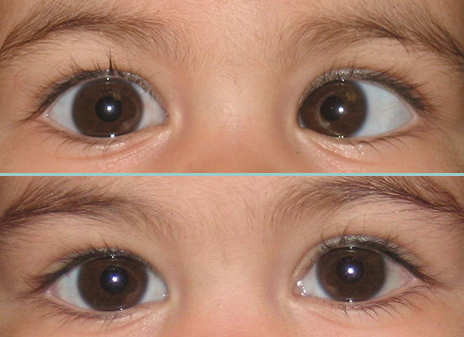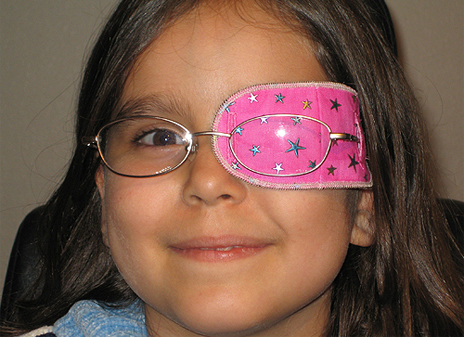Questions and Answers
Pediatric Eye Problems Q & A
by Scott Silverman, MD
Fellowship-trained Pediatric Ophthalmologist
What is the difference between nearsightedness and farsightedness?
Nearsightedness is the common term for myopia. A myopic eye can see objects clearly up close, but not those at a distance. Myopia is usually first detected in elementary school when a child cannot read the board.
Farsightedness is the common word for hyperopia. A hyperopic eye cannot see near objects clearly without focusing effort. Children with mild hyperopia are able to focus and see clearly at all distances. Children with extreme hyperopia are unable to sustain the needed focusing and may develop headaches, crossing of the eyes, or permanently reduced vision.
What is astigmatism?
Astigmatism is an irregularity in the shape of the front of the eye causing a blurred image at all distances. The most common cause of astigmatism is when the cornea is oval-shaped rather than round.
Myopia, hyperopia and astigmatism are treated with glasses or contact lenses.
Why do my infants eyes constantly tear and crust?
The most common cause for this problem is tear duct obstruction. A small tube drains tears from the eye into the nasal cavity. When this tear duct is incompletely formed at birth, excessive tearing and crusting of the eyelids occur. With proper massage of the tear duct, the problem usually resolves by one year of age. For those children that do not improve by a year of age, surgery can be performed to open the tear duct.
What is lazy eye?
Lazy eye is the common term for amblyopia. Amblyopia is poor vision in an eye that did not develop normal sight during childhood. Without treatment, children with amblyopia will never see well in one eye, even with glasses. Amblyopia is detected during an eye exam by finding a difference in the vision between the two eyes. Amblyopia is usually treated by patching the good eye to force the lazy eye to work.
Strabismus is a misalignment of the eyes. The eyes may cross or drift out. Strabismus can sometimes be treated with glasses but in other cases benefits from eye muscle surgery.
What is dyslexia?
Dyslexia is a condition in which the brain interprets vision from the eye in an unusual way. The vision in a child with dyslexia is usually normal but the brain confuses the message it receives from the eyes. Since vision problems can compound the learning difficulties of a dyslexic child, a complete eye exam is prudent.
This article was written by Dr. Scott Silverman, our fellowship-trained Pediatric Ophthalmologist.
Dr. Silverman is available at our locations in Sarasota and Lakewood Ranch, Florida. He specializes in children’s eye care, strabismus, amblyopia (lazy eye), and eye muscle surgery in children and adults.
Your Child's Vision

Amblyopia
What is Lazy Eye? Vision problems are common in children. Early recognition and treatment are the keys to preventing permanent visual impairment.



